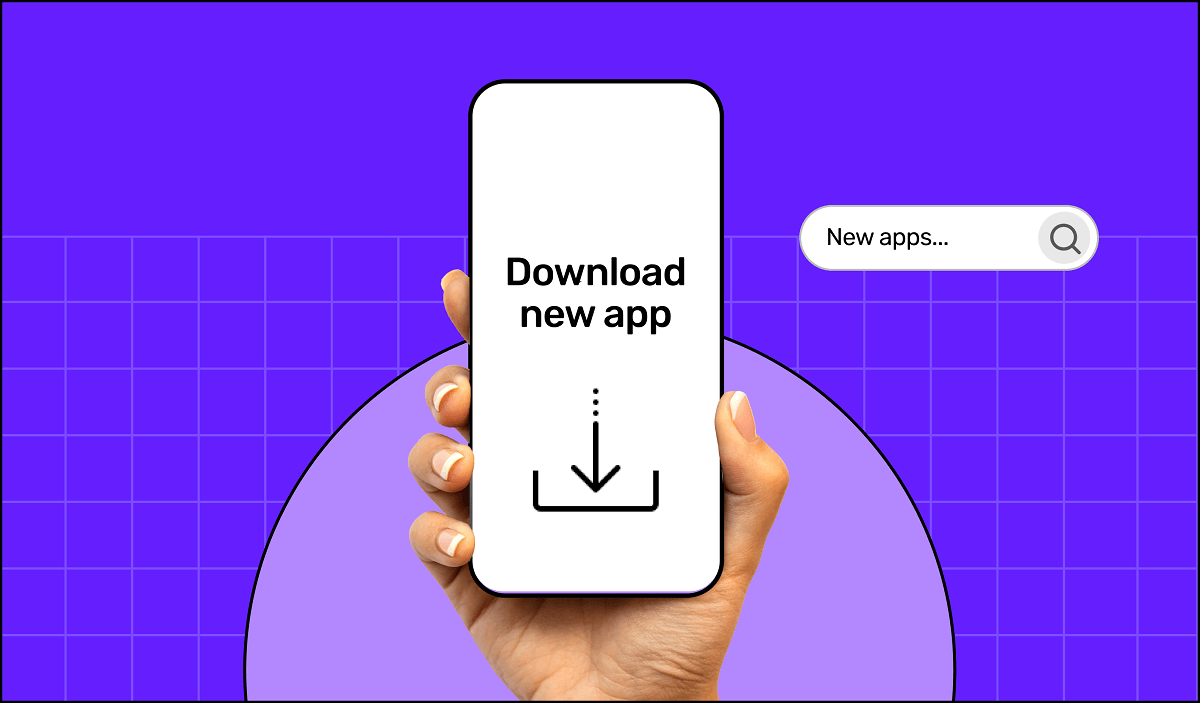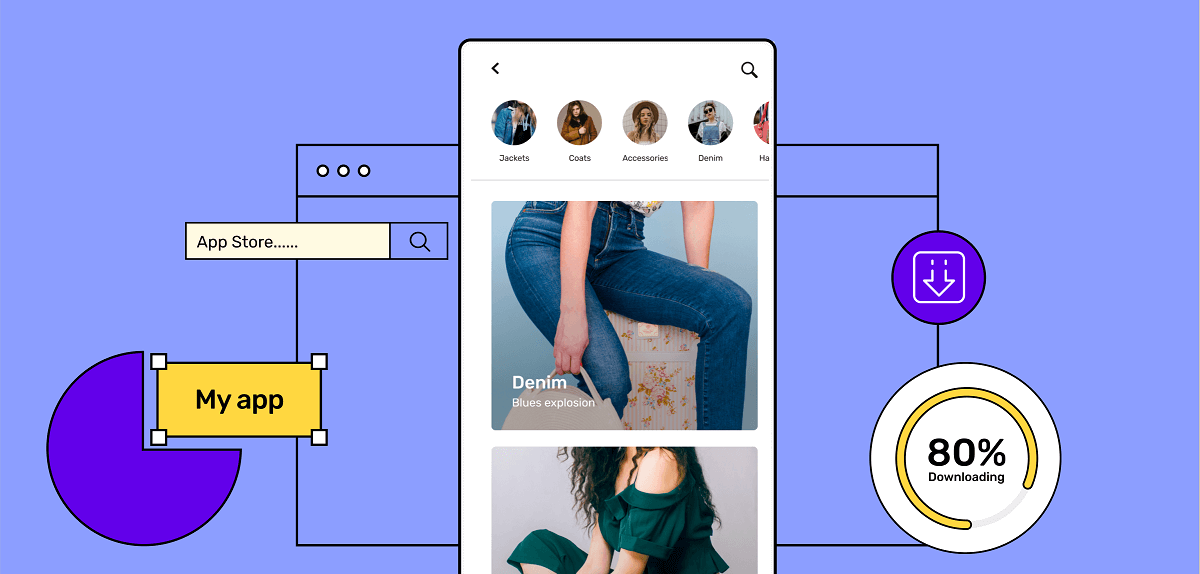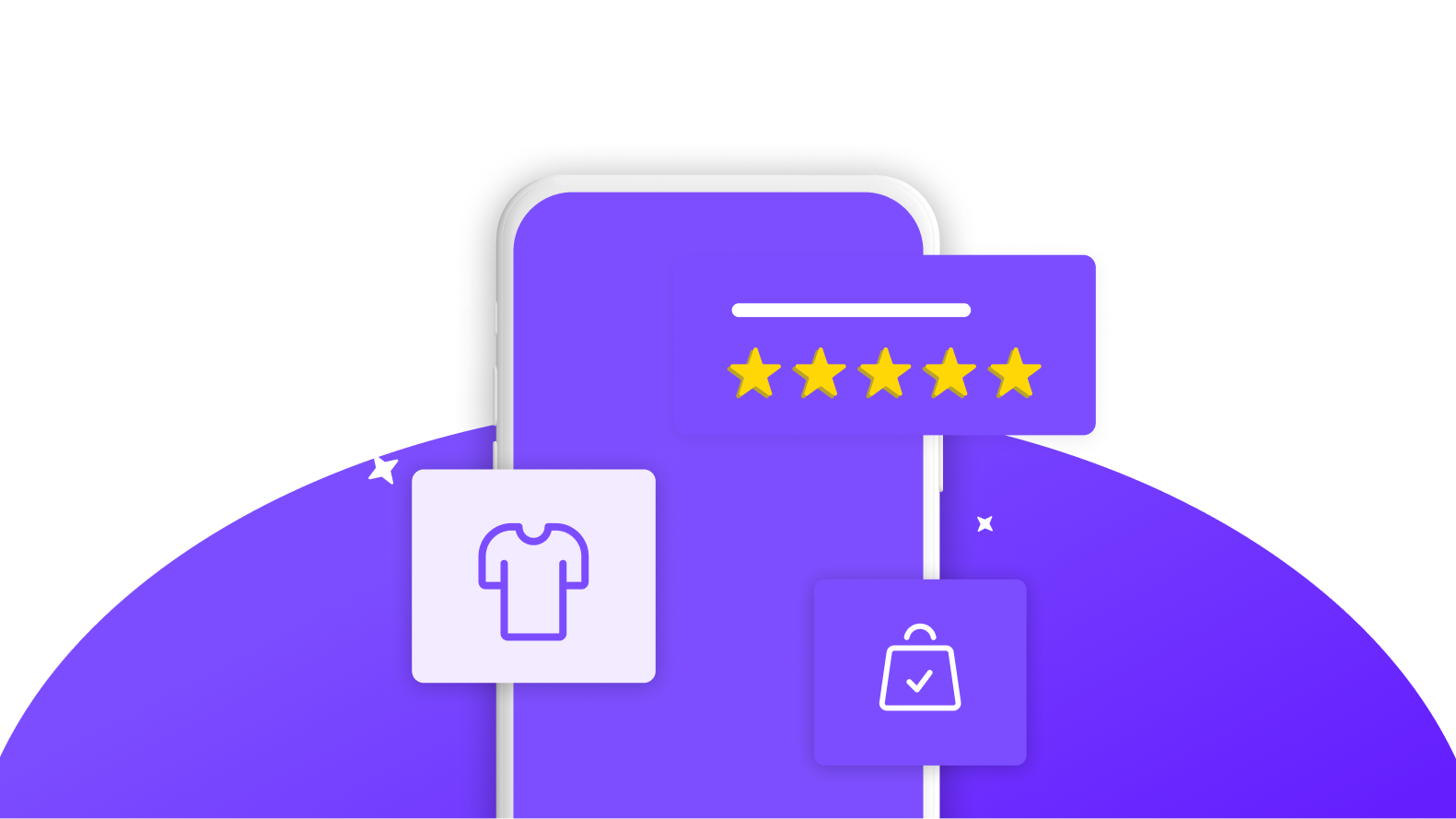The excitement of creating an app may not be matched by the mundanity of listing, describing and optimising it.
But that doesn't mean these processes aren't vital parts of your go-to-market strategy.
In fact, knowing which mobile app stores best suit your app and target customers – and how to carry out app store optimization (ASO) – is just as important as the features you build.
Because without this knowledge, you won't be able to reach the rightpeople. Which means fewer downloads and, ultimately, less revenue.
In this blog, I’m going to help you assess the biggest app stores on the market.
Want to start your app project with us?
Book a demoSpeak with one of our product experts today.
By proceeding you agree to Builder.ai’s privacy policy and terms and conditions

How exactly? By giving you:
- A checklist for the key characteristics of leading app stores
- An analysis of each mobile platform’s cost, features and addressable market
- A verdict on the app stores you should choose to list your app on
Let’s go! 👇
What is an app store?
First things first, let’s double check we’re both on the same page. Here’s my app store definition:
An app store is a digital marketplace that allows app owners to list and sell their mobile applications and consumers to discover and buy them. The biggest app stores tend to list apps native to particular operating systems (OS) like iOS and Android, whereas multi-platform app stores list several.
You should also know which mobile app store you plan on using before the app development process begins.
Now we’ve cleared that up, let’s move on to the boxes your chosen app store should check…
What are the characteristics of a good app store?
There are three key criteria you need to consider when listing your app on an application store, which I’ll refer to throughout this blog.
Take a glance below, before weighing up the main contenders 👇
Cost
As the old saying goes, nothing good in life comes for free. But when you’re choosing somewhere to list your app, it shouldn’t break the bank.
And while most app stores charge nominal fees to publish apps to their marketplace, it’s the revenue share they demand you need to be wary of.
Big players in the market can take as much as a 30% cut of your annual net revenue, so make sure your projections account for this.
Features
Like it or lump it:
Any app owner is at the mercy of application store algorithms, at least to some extent. And that’s what makes the marketing features these apps can provide to you so important.
Because the more features you have available to you, the more you can control the narrative. For example, by including killer descriptions, screenshots and videos, you can emphasise the things you offer that your competitors can’t.
This kind of information and media also helps app stores index and rank your app. In other words, making it discoverable to the general public.
But without this ability to personalise, app reviews will be your only currency.
Total addressable market (TAM)
Low fees, no revenue share, tons of features. Ding, ding, ding!
You think you’re playing 4D chess by finding a mobile platform none of your competitors know about. Trouble is, your potential customers don’t know about it either, especially if they’re not tech-savvy.
So even though there’s a ton of competition on major platforms like the Apple App Store and the Google Play Store, they should be the first port of call for the vast majority of apps.
Specialist apps aimed at more technical audiences, on the other hand, could benefit from listing on niche app stores. But gathering customer data on which mobile devices and app stores they use is essential if you don’t want to wait for ages for some ROI.
Don't forget though…
Wherever you decide to list your app, your TAM isn’t everyone who uses that platform. It's the revenue opportunity available to you; in other words, a much smaller proportion of people.
For example, you can theoretically reach billions of people through Google search. But the information you're providing or the product you're selling won’t be relevant to everyone.
Analysing the 3 biggest mobile app stores right now
Below, you can see a breakdown of the respective features, costs and addressable markets of the Google Play Store, the Apple Appstore and the Amazon Appstore.
I’ve chosen these 3 application stores because of recent data from Statista about the number of apps on each of these platforms👇
1 - Google Play Store (Android-specific app store)
Features
- 30-character app title limit
- 80-character short description limit
- 4,000-character long description limit
- 8 screenshot limit
- 1 video limit from 30 seconds to 2-minutes long
- Preview assets including screenshots and videos show within app listing and in search results when users search for brand names
- Maximum of five tags to help Google understand your app category
Cost
The Google Play Store charges a one-off $25 fee to publish apps to its marketplace, after which you can submit apps for free.
Commission wise , developers who aren’t enrolled in the 15% service fee tier pay a 30% service fee automatically. Those who are pay a 15% service fee for the first $1M of revenue and a 30% service fee for earnings in excess of $1M.
TAM
Android has around 71% of the global market share of operating systems, making it the largest player in the market.
And with 3.5 million listed apps on the Google Play Store as of Q2 2022, it’s also the OS with the largest native application store.
On the one hand, this means competition is high. On the other, if you get your ASO strategy right, you have a direct line to a huge percentage of your target customers.
2 - Apple App Store (iOS-specific app store)
Features
- 30-character app title limit
- 45-character short description limit
- 4,000-character long description limit
- 10 screenshot limit
- 3 video limit from 15 to 30-seconds long
- Preview assets show on search results and within app listing
- Primary and secondary category options to help accurately list your app
Cost
The Silicon Valley giant charges a $99 annual fee to publish apps to the App Store, taking a 30% revenue cut in subscribers’ first year of service and 15% thereafter.
This is for developers who don’t qualify for the Apple Small Business program; in other words, those who make more than $1M in annual revenue.
The Apple Small Business Program , on the other hand, allows anyone making less than $1M in annual revenue a commission rate of 15%, “regardless of whether or not the subscription has accumulated one year of paid service”.
TAM
With around 28% of the global market share of operating systems, Apple is comfortably the second biggest player in the market.
The Apple App Store also has 2.2 million listed apps, making it the second-largest native app store.
Again, this means there’s high competition, but a great chance of reaching your target customers with a thorough ASO strategy.
3 - Amazon Appstore (Android-specific app store)
Features
- “Brief” app title recommended; no suggested character limit
- 1,200 character short description; 200 characters visible before ellipses shown
- 4,000-character long description limit
- 10 screenshot limit
- 5 video limit no longer than 60 minutes each
- Promotional image option to emphasise brand and app functions
- Keyword options to help accurately list your app
Cost
When you want to publish an app to the Amazon Appstore, all you need to do is create an Amazon app developer account, which is free.
Meanwhile, the company’s Small Business Accelerator Program is one of the most competitive on the market, offering up to an equivalent of 90% of revenue for app owners making less than $1 million annually.
These businesses “receive an 80/20 revenue share by default” with Amazon making up the remaining 10% with AWS promotional credits. The reason for this is so developers can “take advantage of the benefits of building on the cloud”.
TAM
As an alternative Android app store, the Amazon Appstore carves off a significantly smaller slice of Android’s market share than the Google Play Store.
With 476,000 Android apps, it’s an alternative to Android app owners seeking less competition and more competitive rates.
Which major app store should I choose to list my app?
Let’s return to the criteria we’ve been using throughout to decide which major app store comes out on top 👇
Features
Google Play | Apple App Store | Amazon Appstore | |
App title | 30-character limit | 30-character limit | No character limit |
Short description | 80-character limit | 45-character limit | 1,200-character limit |
Long description | 4,000-character limit | 4,000 character limit | 4,000-character limit |
Screenshots | 8 screenshot limit | 10 screenshot limit | 10 screenshot limit |
Videos | 1 video limit | 3 video limit | 5 video limit |
Preview assets | Show within app listing on general searches and on search results in branded searches | Show on general searches and within app listing | Shown within featured placements |
Category and tags | 5-tag limit | Primary and secondary category options | Keyword options |
Verdict
🥇 - Amazon Appstore
🥈- Apple App Store
🥉- Google Play Store
The Amazon Appstore offers the most freedom to personalise your app listings, meaning its features are the most attractive on paper.
The only caveat would be that a longer character limit for short descriptions isn’t necessarily a benefit as it could prevent you from describing your app concisely.
The App Store, meanwhile, offers solid customisations options, with the Google Play Store falling slightly behind.
Cost
Google Play | Apple App Store | Amazon Appstore | |
Cost | One-time $25 fee | $99 annual payment | Free |
Revenue share | 30% service fee for earnings > $1M; 15% of earnings up to $1M for developers enrolled in 15% service fee tier | 30% for businesses making > $1M net revenue in their first year; 15% thereafter and for businesses enrolled in App Store small business program making < $1M | 30% for businesses making > $1M net revenue; equivalent of 10% for businesses making < $1M when including AWS promotional credits |
Verdict
🥇 - Amazon Appstore
🥈- Apple App Store
🥉- Google Play Store
With zero app submission fees and a highly competitive revenue sharing rate for small businesses, the Amazon Appstore comes out on top once again.
Meanwhile, the Apple App Store does a better job of rewarding the loyalty of successful apps than the Google Play Store.
TAM
Google Play Store | Apple App Store | Amazon Appstore | |
Market share | Large slice of 71% | Large slice of 28% | Small slice of 71% |
Number of apps | 3.5 million | 2.2 million | 476,000 |
Verdict
🥇 - Google Play Store
🥈- Apple App Store
🥉- Amazon Appstore
When it comes to reaching the largest audience, the Google Play Store is a clear winner, with the Apple App Store comfortably in second place.
Although a great alternative to the Google Play Store, the Amazon Appstore shouldn’t be your priority when first listing your app, unless you knowthat’s where your customers are.
Conclusion: Get the best of both worlds
The Amazon Appstore is offering impressive features and competitive costs to compete with the biggest players in the game.
That said, the Google Play Store and the Apple App Store should still have most of your attention.
That’s because they’re the flagship app stores for a whopping 99% of global mobile devices.
And by creating apps compatible with both operating systems and listing on the two major stores, you’re sure to reach the vast majority of your target customers.
The thing is:
With some app builders, you can only build native apps for either Android or iOS. But that's not the case with us.
With Builder Studio 👈 you can get the best of both worlds and create apps without limits. Hit the link above to see how!
FAQs
For some extra mobile app store insights, scroll through the frequently asked questions below 👇
Which alternative Android app stores should I know about?
The best 14 alternative Android app stores right now are: 1 - Amazon Appstore | 2 - Samsung Galaxy Apps | 3 - Aptoide | 4 - GetJar | 5 - Mobile9 | 6 - SlideME | 7 - Mobango | 8 - Huawei | 9 - F-Droid | 10 - LG Smart World | 11 - APKMirror | 12 - APKPure | 13 - SlideMe | 14 - Uptodown
Which alternative iOS app stores should I know about?
The best 14 alternative iOS app stores right now are: 1 - AppCake | 2 - Sileo | 3 - TutuApp | 4 - TopStore | 5 - Appland | 6 - GetJar | 7 - AppValley | 8 - Asterix Installer | 9 - PandaHelper | 10 - BuildStore | 11 - CokernutX | 12 - TopStore | 13 - Builds.io | 14 - AppEven
Experienced Director with a demonstrated history of working in the internet industry, Last mile logistics & FMCG. Skilled in Business Planning, Operations Management, Coaching, Sales, and Retail. Strong Leadership, project management and skilled motivator able to operate at C level, Senior Management and at operational roles across any business. Business transformation, New Business and start up business model are a passion and a Natwest Entrepreneur Finalist 2018. For growth in Sales, Operations and people, I have the experience to deliver you a plan and then deliver the plan.












 Facebook
Facebook X
X LinkedIn
LinkedIn YouTube
YouTube Instagram
Instagram RSS
RSS


